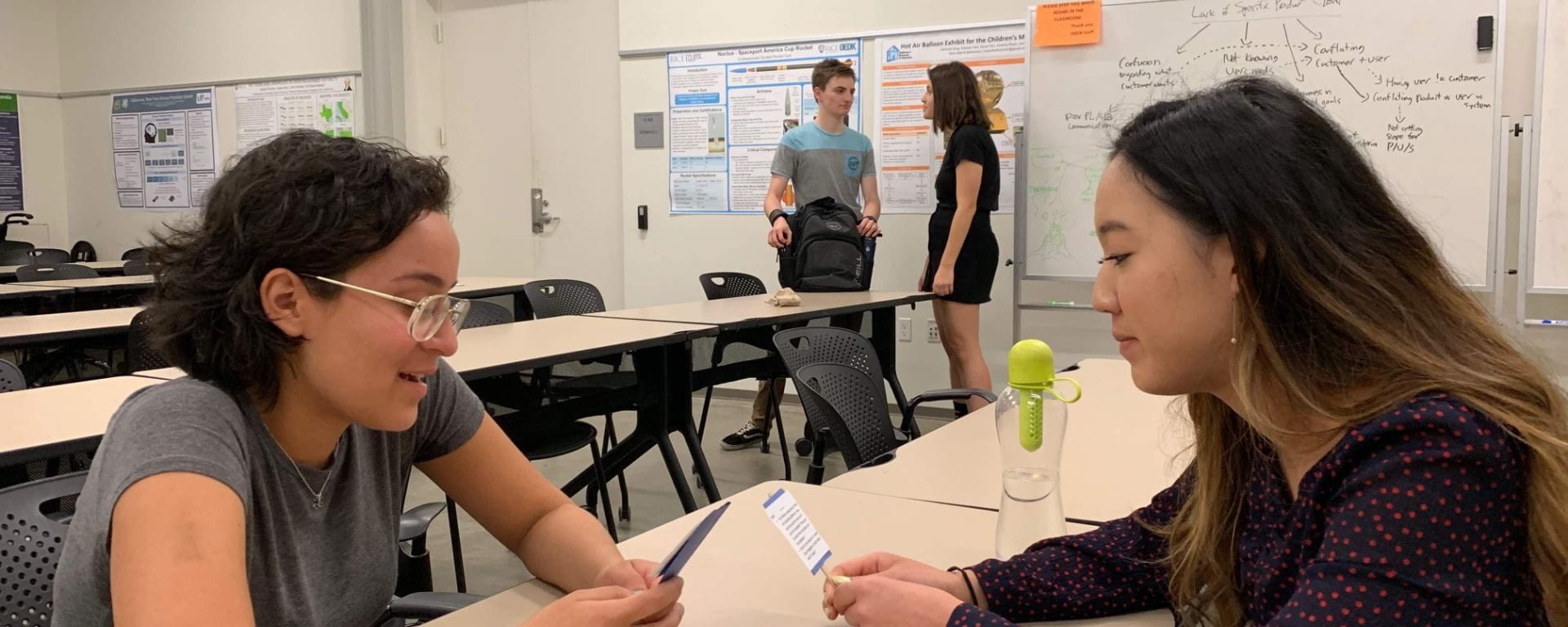We tested three different prototypes during the test phase, each of which addressed a different element of our design. First we tested content, then form, then a combination of the two.
Our content prototype test was guided by the question: how can we make gardeners feel comfortable talking about personal details of their garden with a stranger? With this in mind, we focused on the wording and organization of questions, rather than content. Since we wanted to test with Rice students who don’t know much about gardening, we wrote questions about Orientation Week and advising. This is relevant to all Rice students and has some parallels to community gardening. Both are about community building and personal relationships. We wrote questions ranging from very casual to very personal and arranged them in three categories with more intense questions at the bottom.
We found two strangers in Coffeehouse and asked them to discuss as many questions as they wanted in a 5 minute period. We found that people tended to start with more basic and casual questions before moving to more personal questions. One important factor in how personal test subjects got is their knowledge of the topic. People who held leadership roles in orientation week spoke more openly about their experiences. We believe this is in part because they have more to say, and in part because they have had more practice talking about their experience with orientation because the training process is very reflective. Because of these two confounding factors, we were not sure how similar gardeners would be in their response patterns.
Our second test focused on form and organization of the product. We made around 30 low fidelity prototypes cards using popsicle sticks and construction paper. There were three different color prototypes. We attached some basic reflective questions about DFA to the front along with instructions for people to find another studio member with the same color card and discuss. We found that people were not very receptive to this exercise, but our results may have been impacted by the fact that we were not meeting in our usual space and the cards were not already on the table when the first studio members arrived. Studio members said that they were waiting for someone to tell them what to do, even though the card told them what to do.
Our last test was a mid fidelity prototype of the cards that had our second iteration of questions on it. These were still questions about advising, but they were grouped into relevant themes and included one lead question based on our testing. We had a higher success rate than the first process test, with people getting up to find a match and discussing the questions. We got great feedback on which questions were most effective and sent out a survey about the process of using the cards and quality of the questions.
Finally, we used these insights to write garden-specific questions, created an even higher fidelity physical prototype, and sent them to Terry, one of our users, for feedback. He gave us a few edits on the wording of questions and we discussed the feasibility of the prototype in an actual garden setting.



